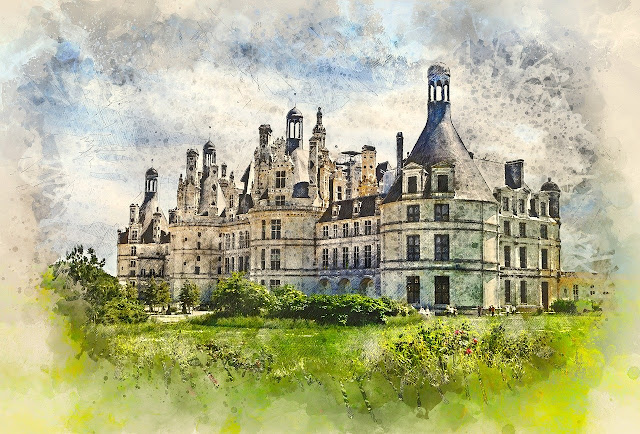You've seen the Pyramids as part of Tourism in Egypt and want to travel back in time to the days of the pharaohs to learn about their everyday lives, livelihoods, and the concept of a house. Is that something you can do? Ofcourse, this is conceivable.
- See the Pharaonic Village by Taking a Boat Down the Nile
- Sacred Temple, Read Hieroglyphs and Pharaonic House
- Museum
- Reference
See the Pharaonic Village by Taking a Boat Down the Nile
After purchasing tickets to Pharaonic Village, we were met by a stunning flower garden before waiting inside a beautiful classic American style cafe for our boat schedule. You can select whether you want to be guided in Egyptian Arabic or English because Mamazorayas did not speak Egyptian Arabic at the time, we chose English. The large boat picked us up, and it was only me, chef X, and the boat driver, we felt so special.
We walked along the quiet Nile River while the boat equipped with cassette tapes would stop at every point (for example, stop at the replica of the akhenaten statue and start explaining about Akhenaten) After seeing how to make papyrus and getting to know pharaohs, our ship then entered the village, we saw Pharaonic ancient building also at first we thought it was a statue there but it turned out that there were actually people in ancient clothes doing a scene we were really amazed they prepared it very professional.
We will be shown the everyday activities of the residents with historic architecture, indigenous people wearing ancient clothing display agricultural operations, how to capture fish, ship-building, perfume production, and food industry practises in this Pharaonic village.
Sacred Temple, Read Hieroglyphs and Pharaonic House
After we've seen everything the boat will carry us to the tourist location of our choice. We then proceeded to a magnificent ancient replica of the pharaoh era, complete with guards dressed in period garb, where we met a tour guide who spoke English and explained the traditions and functions of the room, as well as being shown a replica of an ancient temple and learning how to read hieroglyphs, which was an exciting experience.
We then proceeded to another place, where a duplicate of a wealthy man's home from his era had already been built. A horse-drawn carriage is parked in front, followed by a waterfall encircled by a curved garden.
The official's office is on the right side, while a gorgeous woman preens with her helper fanning her and playing music is on the left. There was a toilet in ancient times, as well as a separate area for bathing. There is also a separate area for storing food, as well as the rice barn, which is located in various locations.
We were then invited to the back of the home, where there was already a separate kitchen from the main room, as well as a horse stable, and where there was an ancient atm machine as we arrived to the exit (a room filled with goods for bartering). how they make architectural features for every function of the house so that it feels really comfortable inside
We were walking through ordinary people's homes when we came across a basic house where the wife was busy working also husband was making a fire out of straw.
Museum
The tour guide then brought us to the museum, where we could enjoy a magnificent garden with shady trees,
as well as an Islamic museum and a museum dedicated to one of Egypt's leader.

 Once you've had your fill of seeing us, go to a restaurant and show your ticket; they'll create your meal based on the menu you select. Then you'll stroll through the park to a boat that will transport you back to today's world, and we'll end our journey at the pheronic village, where we'll, of course, return because the pheronic village has so much to offer. As below
Once you've had your fill of seeing us, go to a restaurant and show your ticket; they'll create your meal based on the menu you select. Then you'll stroll through the park to a boat that will transport you back to today's world, and we'll end our journey at the pheronic village, where we'll, of course, return because the pheronic village has so much to offer. As below- The Ptolemaic museum: It depicts the historical eras of Alexander the Great and Cleopatra.
- Tomb of "Tutankhamen": It is an exact replica, complete with all of its treasures.
- The Pharaonic Boat museum: Ancient Egyptian ships and boats are on show in this museum. These were sailboats or boats with oars, built of papyrus or wood, and utilised for religious rituals.
- The museum of Islamic history: This museum's mission is to educate children about their history and heritage. It tells students about the legendary warriors who ruled the ancient world from Persia to Spain.
- The Coptic museum: This museum provides a detailed account of Coptic Egypt's history as well as Coptic art.
- The village has two other museums: The first is to show how ancient Egyptian mummies were preserved.
- The second portrays Egyptian daily life in ancient Egypt in its entirety. It, as well as other museums, depict their way of thinking and living.
Don't miss the pheronic village from the tourism of egypt list because the experience you get is more than the price of the entrance ticket
Reference:
Pharaonic Village
http://www.giza.gov.eg/English/Tourism/Landmarks/EPharaonic%20Village.aspx
Pharaonic Village
https://www.sis.gov.eg/Story/101114/Pharaonic-Village?lang=en-us



























0 Comments